A Finely Tuned Screwdriver?
Put an end to wrecking screw slots with this simple trick to tune up your screwdriver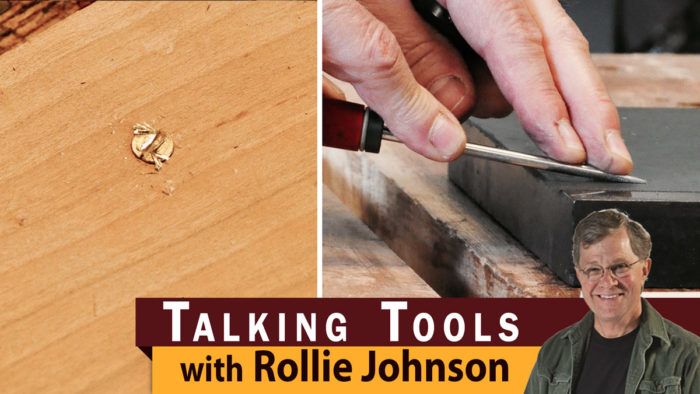
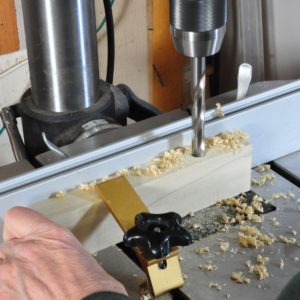 There are few things more frustrating than stripping a screw slot during final assembly. Straight-slot screws are the preferred screw type for fine work and the glaringly destroyed edge of a damaged screw will haunt the dark dreams of any woodworker. But with an accurately square screwdriver tip and a tiny burr, the chances of damage are significantly lessened. Here’s how I do it.
There are few things more frustrating than stripping a screw slot during final assembly. Straight-slot screws are the preferred screw type for fine work and the glaringly destroyed edge of a damaged screw will haunt the dark dreams of any woodworker. But with an accurately square screwdriver tip and a tiny burr, the chances of damage are significantly lessened. Here’s how I do it.
Start by building this holder for your screwdriver. Grab a piece of wood roughly 1 in. by 2 in. by 10 in., bore a 1/2-in.-dia. hole 1 in. deep and 2 in. from the end. The bore is to accommodate screwdrivers that have the typical spade-head end.
Now resaw the board exactly through the middle of the bore.
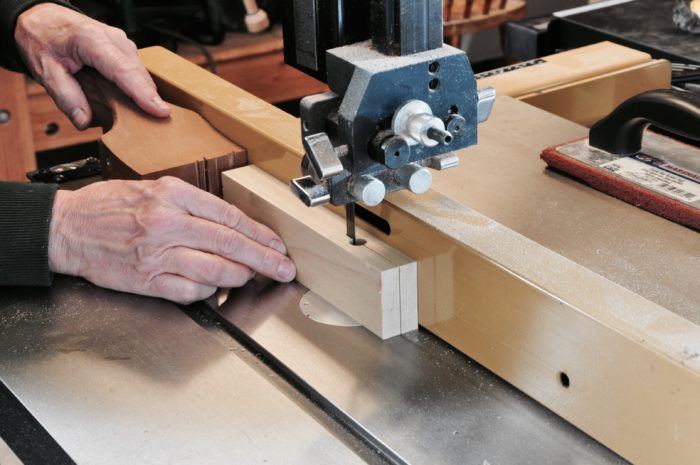
Next, tilt your tablesaw blade to 45° and lower it until the protruding teeth form a nice little V above the throat plate. Cut a groove across the faces of the two pieces. This will be the clamp for holding the screwdriver square and secure.
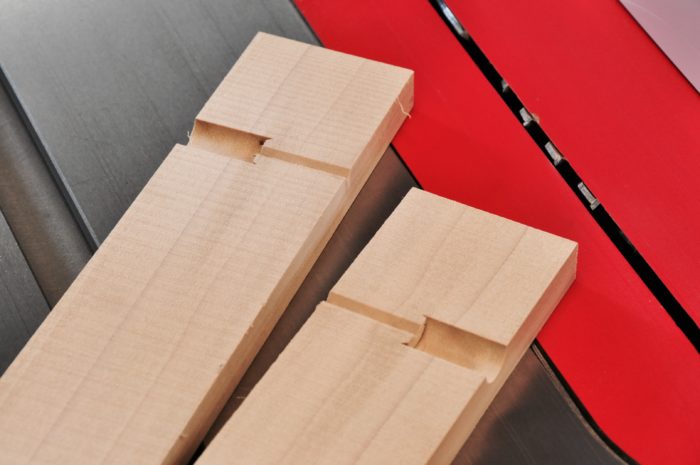
To tune up the screwdriver tip, first flatten the sides of the blade. I use 600-grit paper on my granite stones for this task. Polished isn’t necessary but flat is.
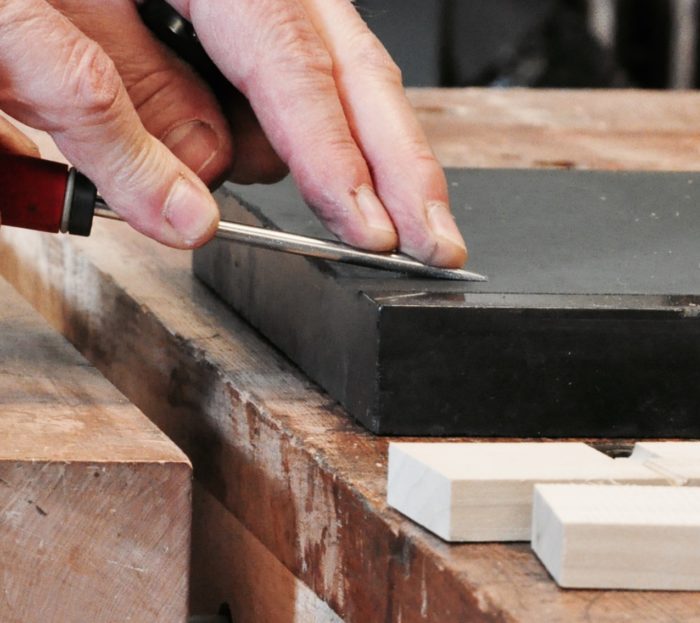
Clamp the screwdriver in the holder with the tip of the screwdriver protruding a few thousandths of an inch. Use a small square to check that the two halves are flush and square. Use a fine single-cut file to dress the tip down to the level of the holder. The result should be a square and flat end.
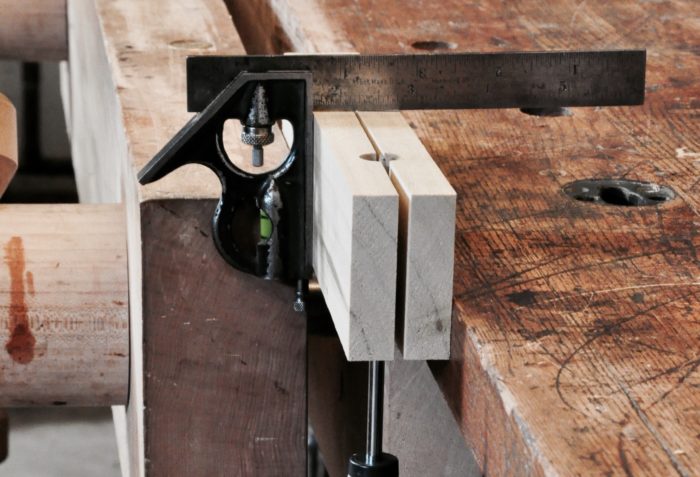
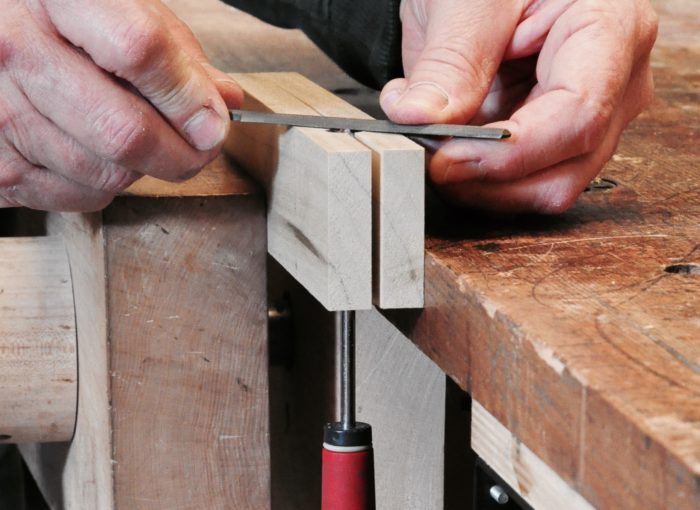
The last step is to use a burnisher to turn a very slight burr on each side of the screwdriver end just like is commonly done with card scrapers. I typically do this freehand but the screwdriver can be clamped in the holder if a person wants to use both hands with the burnisher. I keep the burnisher nearly perpendicular to the screwdriver shaft and make a light pass on each side of the blade, creating a very slight, strong burr. It won’t take a lot of pressure to get a sharp burr since the sides of the screwdriver blade are flat and the tip is flat. The conjoining surfaces create a very sharp edge that the burnisher simply pushes over, creating a sharp “grip” that will stick in a screw slot and keep the blade from jumping out and tearing those nice clean slot edges. We aren’t looking for a scraper-size hook, just a tiny hook that will hold the screwdriver tight in the screw slot. It makes an amazing difference.
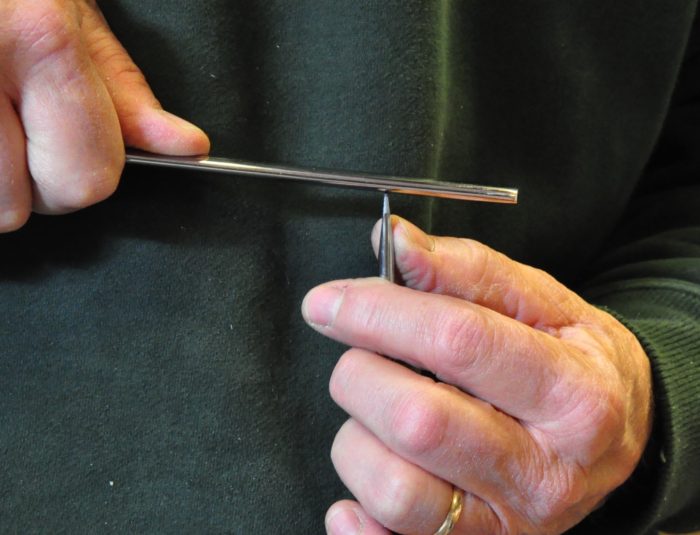
When the burr has stopped being a burr, simply draw the sides of the tip up, erasing any leftover burr, and then draw a fresh burr like you did originally.
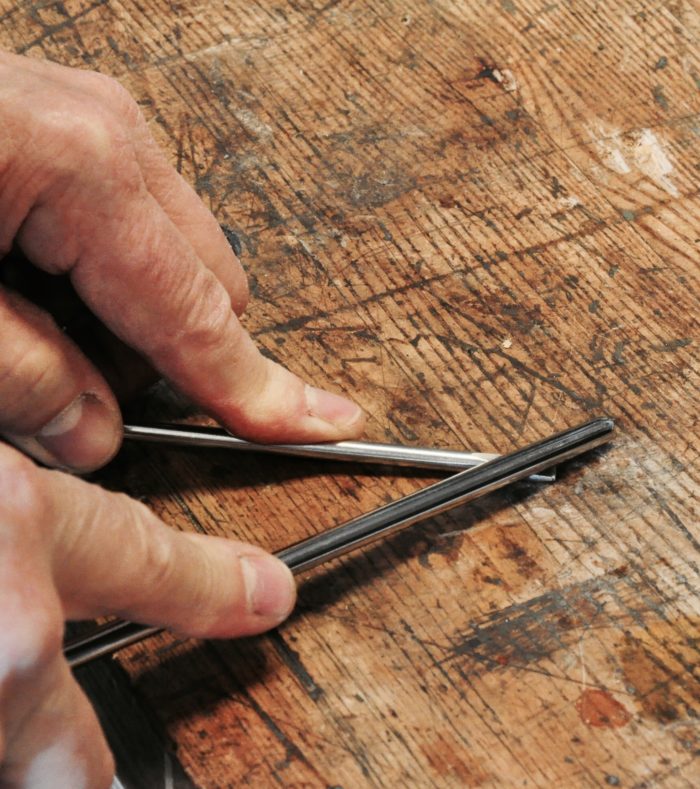
Eventually the edges will get worn and filing will be necessary to create a burr, but a good quality screwdriver will hold a burr for a long time, and as with all tools, good quality is everything.
One last thing: clock your screws, that makes an amazing difference too! Just my opinion of course.
Fine Woodworking Recommended Products

Stanley Powerlock 16-ft. tape measure

Marking knife: Hock Double-Bevel Violin Knife, 3/4 in.

Starrett 4" Double Square

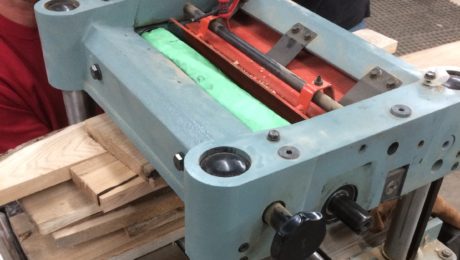
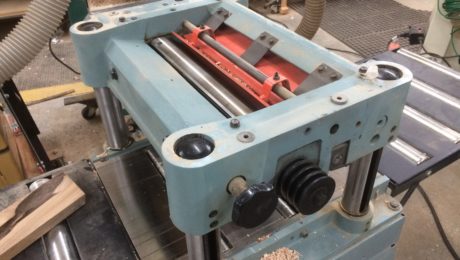
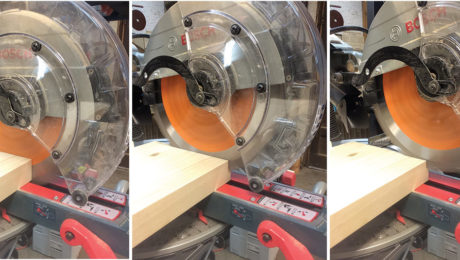
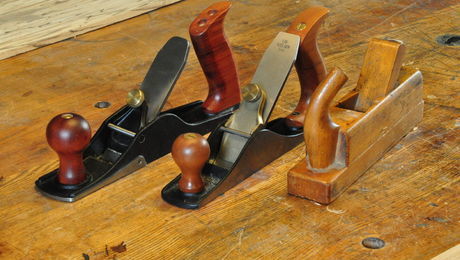










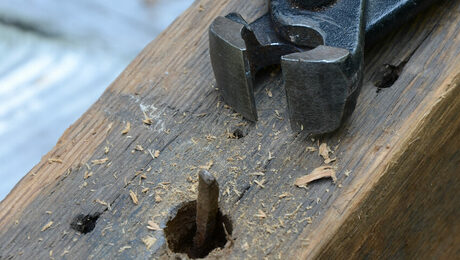
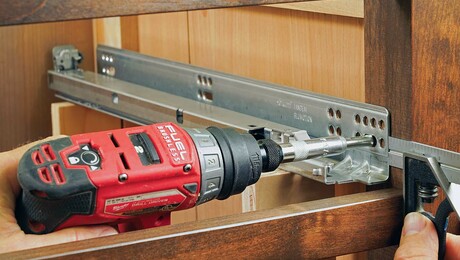

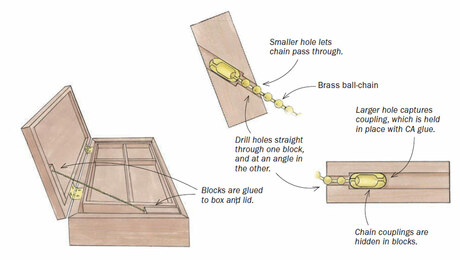








Comments
What is 'clock your screws'?
Google is your friend. It's lining up the slots in the same direction--all parallel or perpendicular to some edge. There are many methods to achieve this but it is the mark of fine craftsmanship. (but doing so on your Swedish, ehumm, flat pack cases won't turn them into fine furniture.)
Line up the slots 6-12 or 3-9 so they all run the same way.
just buy hollow ground screwdrivers
I still have my dad's flat screwdrivers. I know I've seen them in woodworking catalogs. That is, the two faces of the blade are parallel to each other. That helps prevent cam-out. I've filed "regular" screw drivers flat. That said, I'm going for putting burrs on them - on the fairly rare occasion i might consider using slot-head screws. Japanese joinery, anyone? Plugs?
There is a story (probably folklore) that Philips Heads Screwdrivers were deliberately designed to cam-out because the early assembly-line workers were farmers or from the mechanical trades and too strong, broke too many screws.
The day brass screws come with star-drive heads is the day I never use slots again.
Another purist!!!!! After a couple screw installations and the burr is collapsed- back to the burring process? Why not ensure that the driver is a tight fit in the slot to begin with? Work the tool flat!! Then work to blade thickness always keeping the end flat and square and cam out will disappear. Burrs are for scraping, not gripping......
Log in or create an account to post a comment.
Sign up Log in